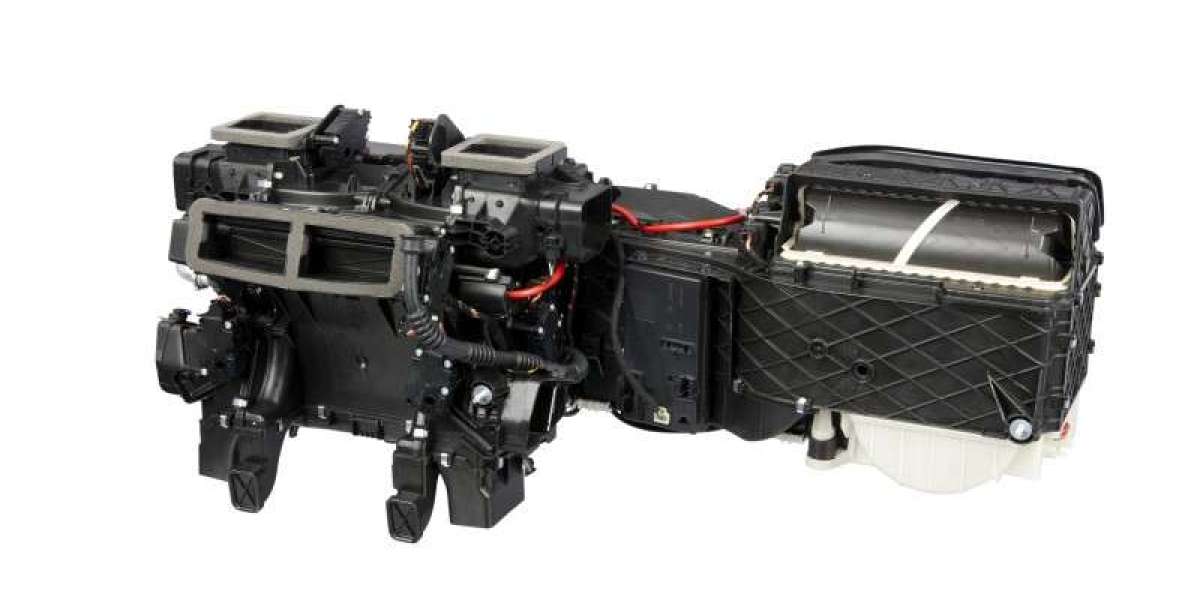The automotive HVAC market (Heating, Ventilation, and Air Conditioning) is a vital component of modern vehicles, directly impacting passenger comfort, air quality, and system performance. As demand grows for smarter, more energy-efficient climate solutions—especially in electric vehicles—HVAC systems must evolve rapidly. However, this evolution faces several structural and technical barriers that limit market growth, adoption speed, and global scalability.
Understanding these barriers is essential for OEMs, component manufacturers, and policymakers working to ensure that future vehicles meet environmental goals, consumer expectations, and performance benchmarks.
High Development and Production Costs
A primary barrier to the wider adoption of advanced automotive HVAC systems is the cost of development and manufacturing. Integrating modern HVAC components—such as heat pumps, variable-speed compressors, multi-zone climate control, and air purification features—requires significant investment in R&D, tooling, and material sourcing.
For electric vehicles, HVAC systems must be redesigned from the ground up to maintain temperature without relying on waste heat from internal combustion engines. This raises the cost of HVAC modules for EVs compared to their traditional counterparts. These cost challenges are even more prominent in price-sensitive markets, where keeping vehicle prices low is essential for competitiveness.
Additionally, increased component complexity means higher warranty risks, training needs, and service infrastructure—further adding to the total lifecycle costs of HVAC systems.
Complexity of Integration in Modern Vehicles
Another major barrier lies in system integration complexity. Today’s vehicles are becoming smaller, more compact, and more interconnected. HVAC systems must now fit into tighter spaces alongside infotainment hardware, airbag modules, batteries, and safety electronics, especially in electric vehicles.
Design engineers must overcome packaging constraints while still ensuring adequate airflow, cabin temperature regulation, and energy efficiency. Integration must also account for noise reduction, vibration isolation, and seamless control via smart dashboards or mobile applications.
This makes HVAC unit development increasingly multidisciplinary, involving not just mechanical engineers but also electrical and software teams—adding layers of coordination and complexity that slow innovation and deployment.
Environmental Regulations and Refrigerant Challenges
Strict global environmental policies represent another significant barrier to the HVAC market. Regulations are rapidly changing regarding the type of refrigerants allowed in automotive climate systems. High-GWP (Global Warming Potential) refrigerants like R134a are being phased out in favor of low-GWP alternatives such as R1234yf.
While these newer refrigerants are more eco-friendly, they also require specialized systems, reengineered components, and more complex handling procedures. This increases manufacturing costs, compliance efforts, and training requirements for service technicians.
Regulatory frameworks also vary significantly by region, adding complexity for global HVAC suppliers and OEMs trying to standardize systems across multiple markets.
Energy Efficiency Barriers in Electric Vehicles
Energy consumption is a crucial barrier in EV HVAC systems. Unlike combustion vehicles that use waste heat, electric vehicles rely entirely on the battery for both propulsion and climate control.
Running the HVAC system, especially in cold climates, can substantially reduce the vehicle’s driving range, directly impacting user experience. Although heat pump technologies offer a solution, they are still relatively costly and sometimes struggle to perform in extremely low temperatures.
Balancing energy efficiency with performance in electric HVAC units remains a barrier that both discourages EV buyers and complicates OEM design strategies.
Limited Standardization and Modularization
The lack of standardization across HVAC components and systems remains another critical barrier. Currently, most HVAC units are designed specifically for individual vehicle models or platforms. This customization increases cost and slows development cycles.
Without standard or modular systems, suppliers cannot benefit from economies of scale, and OEMs struggle with inventory, maintenance, and retrofitting. The industry would benefit greatly from universal, plug-and-play HVAC modules that can be adapted across multiple vehicle types, but such standardization is still in its early stages.
Barriers to Aftermarket Expansion
While the original equipment market drives most HVAC system sales, the aftermarket remains underdeveloped. Unlike other vehicle systems, HVAC components are not often replaced or upgraded unless failure occurs.
This is due to a combination of factors including high costs, installation complexity, and limited awareness. Many vehicle owners do not prioritize HVAC maintenance or enhancement, reducing aftermarket demand. In addition, retrofit solutions for older vehicles with basic HVAC systems are often not compatible with newer, more efficient technologies.
This limitation in aftermarket engagement reduces revenue opportunities and slows innovation incentives for manufacturers aiming to serve secondary markets.
Data and Software Integration Limitations
As vehicles become increasingly connected, HVAC systems are expected to integrate with other digital functions, such as voice commands, smart assistants, mobile apps, and in-cabin sensors. However, software integration presents barriers related to compatibility, data privacy, firmware updates, and cybersecurity.
OEMs and HVAC suppliers must work in tandem to ensure seamless performance, data security, and update capability, which requires robust collaboration and long-term software support strategies. Without these, HVAC systems risk becoming obsolete or underperforming within a vehicle’s evolving digital ecosystem.
Conclusion
Despite growing demand and innovation, the automotive HVAC market faces several persistent barriers that slow its evolution and global adoption. From high costs and integration complexity to regulatory restrictions and energy challenges, these issues must be addressed through strategic collaboration, modular design thinking, and ongoing R&D investments.
By overcoming these barriers, HVAC manufacturers and OEMs can unlock the full potential of climate control systems—making vehicles smarter, more comfortable, and more sustainable for the future of mobility.








